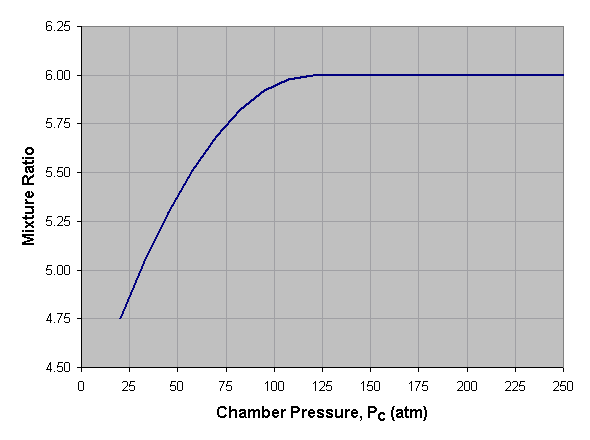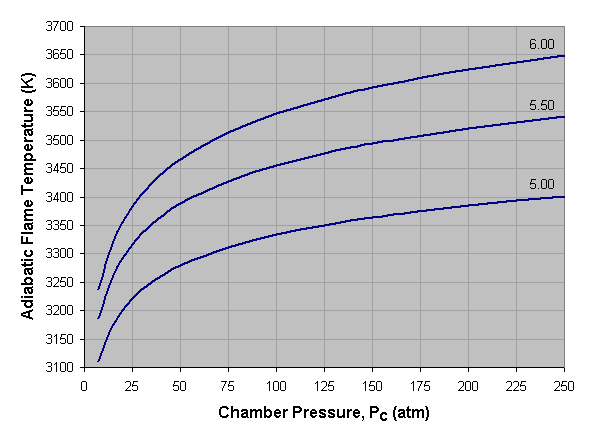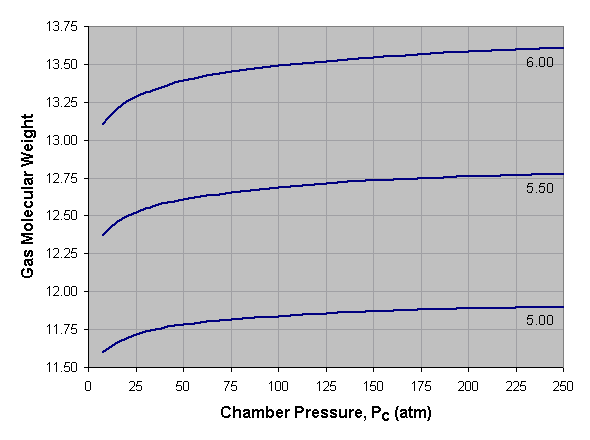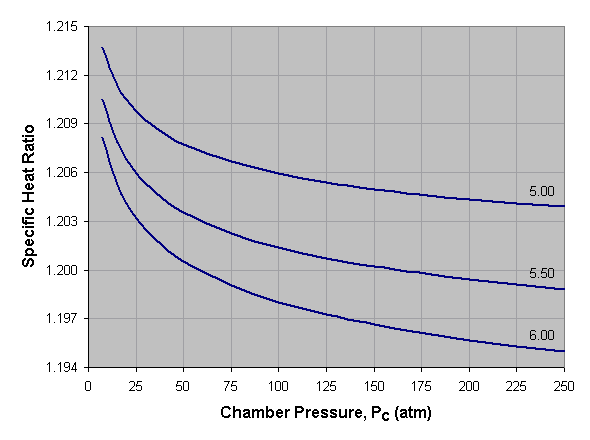
Adiabatic Flame Temperature

Gas Molecular Weight

Specific Heat Ratio

Optimum Mixture Ratio
Unlike other propellants, the optimum mixture ratio for liquid oxygen and liquid hydrogen is not necessarily that which will produce the maximum specific impulse. Because of the extremely low density of liquid hydrogen, the propellant volume decreases significantly at higher mixture ratios. Maximum specific impulse typically occurs at a mixture ratio of around 3.5, however by increasing the mixture ratio to, say, 5.5 the storage volume is reduced by one-fourth. This results in smaller propellant tanks, lower vehicle mass, and less drag, which generally offsets the loss in performance that comes with using the higher mixture ratio. In practice, most liquid oxygen/liquid hydrogen engines typically operate at mixture ratios from about 5 to 6. The graph below is derived as a guideline from actual rocket engines.

Adiabatic Flame Temperature

Gas Molecular Weight

Specific Heat Ratio
